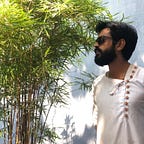Motorcycling Counterculture: Motorcycle as a Literary Metaphor Readings and Narratives from select Motorcycle Literature
Life should not be a journey to the grave with the intention of arriving safely in a pretty and well preserved body, but rather to skid in broadside, in a cloud of smoke, thoroughly used up, totally worn out, and loudly proclaiming, ‘Wow! What a Ride!’-Hunter S Thomas (1967)
Marlon Brandon’s “The Wild One” the outlaw motorcycle gang movie when released in
1953, ignited a new wave of rebellion and a sense of bohemian cultural anarchy among the working class citizens. This sudden explosion ignited a full blown moral panic for the elite classes, and the knowledge industry.
Critics heralded this as another after effect of the post world war syndrome or the literary terminology the Angry Young Men Movement. In literature, motorcycles and the characters associated with them are often represented as outlaw spirits, delinquents, dangerous and who were menacingly disengaged from authority. Brandon’s performance in the movie captured a sense of threatening rebellion, the costumes –black leather and military memorabilia was a contrast to ordinary folk.
In literature, motorcycles are sometimes an escape; a way to chase away a bad marriage, a midlife crisis .In John Osborne’s Look Back in Anger, the protagonist, “Jimmy Porter” is a paramount example to how the middle class life looks for an escape from the monotony of society’s norms and pressure. Deconstructing the motorcycle, from a mere sense of transportation which has evolved to a state of exile, is a paradigm that is fundamentally tied up with imperialism and the breaking away from this global power structure through the first wave of modernism.
It is important to first comprehend the difference between the vast majority of “normal” motorcycle riders and the “deviant” minority. A more political coming-of-age literary endeavor took place in 1952, when 23-year old,
Che Guevara set off from Buenos Aires with a friend on the back of a Norton 500 motorcycle to explore South America, Guevara’s book The Motorcycle Diaries certainly achieved its goal: it pluralized and deconstructed the notion of the middle class, while shifting power over to the middle classes and creating a narrative in the process.
In Jean Baudrillard’s System of Object, Baudrillard remarks how an object that has been liberated by man, in turn liberates man. “…in being librated, has liberated something in man”
(Baudrillard, 16). In this case the object is the motorcycle .The image of the motorcycle epitomizes a way of life, a counter culture-culture and a source of identify for a larger class of society marginalized by society. Thus creating a counter-culture within mainstream culture and society and determining characteristics of the very notion of this counter-culture. A clear indicator, that culture is a systematic process of evolution and amalgamation.
In the novel Slowness, the author Milan Kundera used the image of the motorcycle as a literary vehicle ,to portray modernity , speed and memory “The man hunched over his motorcycle can focus only on the present instant of his flight; he is caught in a fragment of time cut off from both the past and the future”(Kunder, 66) . The aptitude for speed is one of the fundamental qualities of the motorcycle that accounts for its inherent mystique. But however fundamental these traits may appear, they are the foundation upon which this particular culture is constructed upon. The real point of departure is social, not mechanical.
Literature in its many forms has always strived to question a pre-constructed or fabricated notion of tradition, society and its functioning’s. Knowledge and liberty are products of continuous rebellion and revolution and the aftermath being change and acceptance. Literature has always had a vital role to play in affecting the way society imagines’ its position and its place in the world. Thus influencing this new culture to read meaning and apply its vision to the society and its parent culture.
Every society aspires for better welling being, as is the case with this counter culture. This aspiring for betterment accounts for the constant renewal of its narratives and position as acceptance into mainstream culture and livelihood. Cultural elements, which are borrowed from one culture to regenerate another has consequently resulted in an impact of the receptionist society.
Symbols are an important factor in culture, because of the meaning it represents. This meaning in turn can often amend its form based upon the definition of the situation and who is impacted by it or the power that manipulate it. In seeking to define identity, people at times assert their individuality, but also join in with others and work to sustain their sense of status or self esteem in doing so.
Society in its present state, continues to “strive for change”, owing to the mundane. This necessity for a “strive for change” has sought out the motorcycle as an outlet. In the process of finding this outlet, it has resulted in creating a counter culture.
“The motorcycle is a charm against the Group Man” -Robert Hughes
Sometimes an artist has to stray away from his usual palette for that defining hue in his canvas, a writer from his usual style, a musician from his customary notes and society from its set norms. This straying away from norm has allowed the wheel of change to turn in a not so orderly fashion yet pave way for a new journey, while allowing the old norm to continue to function.
